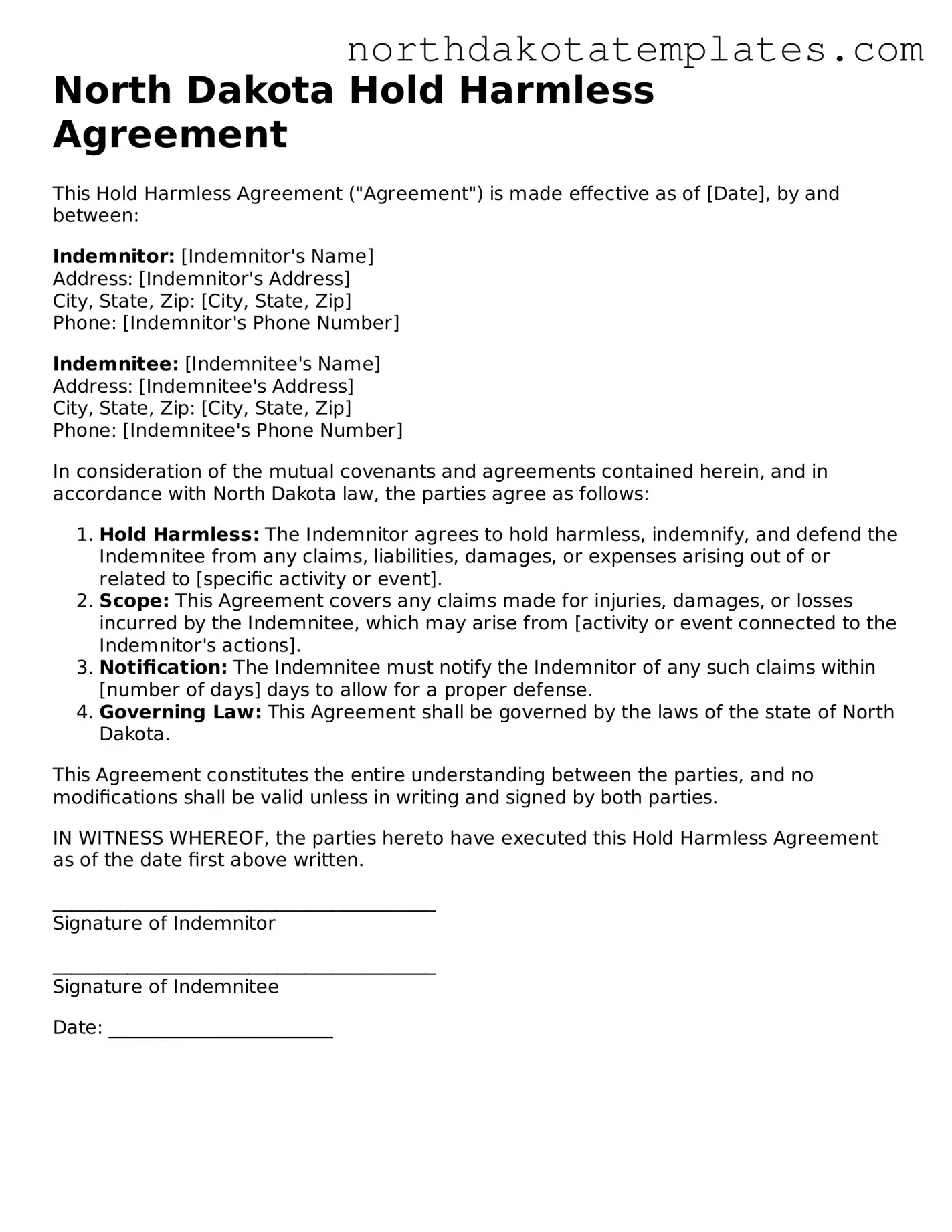What is a Hold Harmless Agreement in North Dakota?
A Hold Harmless Agreement is a legal document that protects one party from liability or claims arising from the actions or negligence of another party. In North Dakota, this agreement is often used in various contexts, including business contracts, rental agreements, and event planning, to ensure that one party does not face legal repercussions for the other party's actions.
Who typically uses a Hold Harmless Agreement?
This agreement is commonly utilized by businesses, landlords, event organizers, and contractors. Any individual or entity that may be exposed to liability due to another party's actions may find this agreement beneficial. For example, a property owner may require a contractor to sign a Hold Harmless Agreement before beginning work on their property.
What are the key components of a Hold Harmless Agreement?
A typical Hold Harmless Agreement includes several essential components: the names of the parties involved, a clear description of the activities or circumstances covered by the agreement, the specific liabilities being waived, and any limitations or conditions that apply. Additionally, it may include a clause addressing the governing law, often specifying that North Dakota law applies.
Is a Hold Harmless Agreement legally binding in North Dakota?
Yes, a Hold Harmless Agreement can be legally binding in North Dakota, provided that it meets certain legal requirements. These include mutual consent, consideration, and a clear understanding of the terms by all parties involved. However, it is important to note that courts may not enforce agreements that attempt to waive liability for gross negligence or willful misconduct.
Can a Hold Harmless Agreement be modified after it is signed?
Yes, a Hold Harmless Agreement can be modified after it is signed, but both parties must agree to the changes. Any modifications should be documented in writing and signed by all parties to ensure clarity and enforceability. Verbal agreements or informal changes may not hold up in a legal context.
What should I consider before signing a Hold Harmless Agreement?
Before signing a Hold Harmless Agreement, it is crucial to thoroughly read and understand the terms. Consider the extent of liability being waived, the activities involved, and any potential risks. It may also be wise to consult with a legal professional to ensure that the agreement is fair and protects your interests adequately.
Are there any risks associated with a Hold Harmless Agreement?
Yes, there are risks associated with signing a Hold Harmless Agreement. By signing, you may be agreeing to assume liability for certain actions, which could expose you to financial loss or legal claims. It is essential to assess the risks involved and to understand the implications of the agreement before proceeding.
How can I create a Hold Harmless Agreement in North Dakota?
Creating a Hold Harmless Agreement in North Dakota can be done using templates available online or through legal services. It is advisable to tailor the agreement to fit specific circumstances and to ensure that it complies with state laws. Consulting with a legal professional can provide additional guidance and ensure that the document is appropriately drafted.
